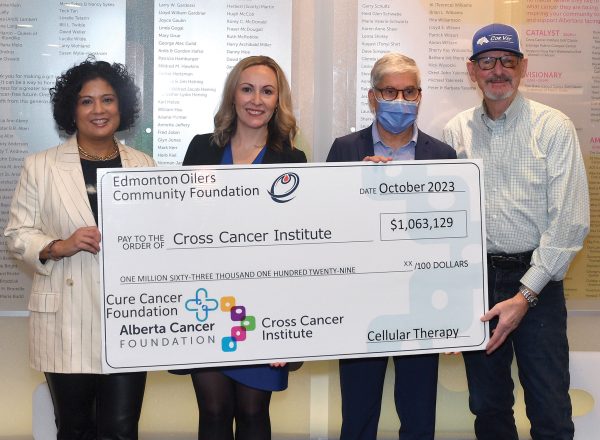Leap Magazine
Leap Magazine is the Alberta Cancer Foundation’s biannual publication that demonstrates how, in partnership with the brightest minds in health care, we are making a difference for Albertans, and their families, facing cancer.
Page to page, we highlight inspirational Albertans touched by cancer and the world class innovations in research, treatment and care that our donors make possible right here in our province. Leap Magazine features real people sharing real stories that reflect the urgency of our work and the impact we are making, together.
Read Our Latest Issue of Leap Magazine



Meet Bradley Drader
In this Living with Cancer series, we capture the bravery, strength, honesty, hope and resilience of Albertans living with cancer


Screening and Testing for Colorectal Cancer
Dr. Darren Brenner breaks down how big data and precision screening initiatives are leading to dramatic drops in colorectal cancer diagnoses and deaths


Hope For the Future
Three veteran oncology professionals share where they found inspiration in their careers and what makes them hopeful for the future of cancer care in Alberta


Scoring Hope
Barrie Stafford shares how the Alberta Cancer Foundation impacted his cancer journey and how fundraising, like hockey, is a team effort


Life in Focus
Ryley Richardson was inspired to support the Alberta Cancer Foundation after his friend and business partner’s experience with cancer
